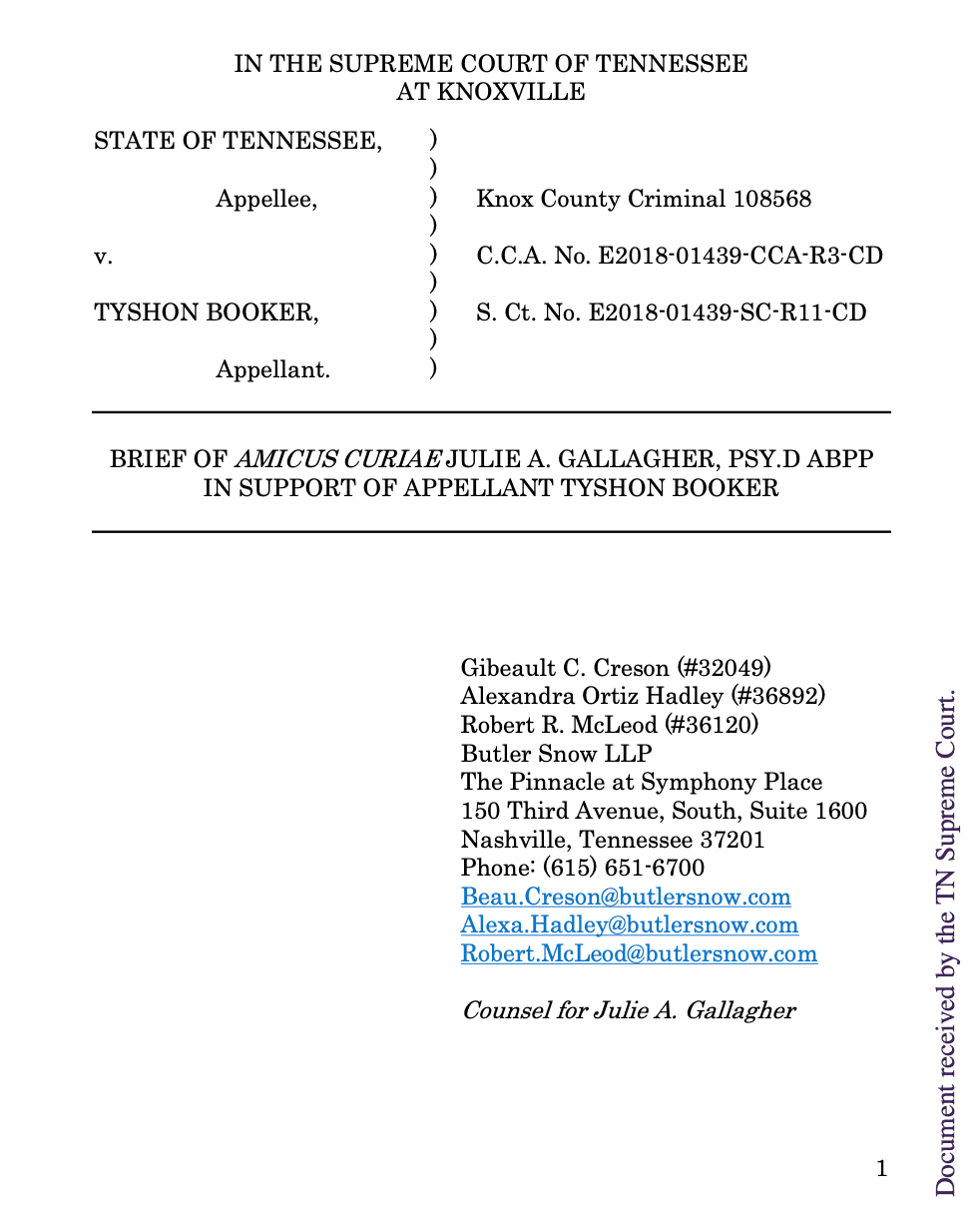
Summary of Argument
In a series of decisions beginning with Roper v. Simmons, 543 U. S. 551 (2005), the United States Supreme Court considered and relied upon research regarding adolescent psychology and brain development to conclude that juveniles are constitutionally different from adults for purposes of sentencing, and, thus, that a juvenile cannot be sentenced to a mandatory life sentence without the chance of parole because such a sentence deprives him or her of the opportunity to obtain release based on demonstrated maturity and rehabilitation as they grow older. See also Montgomery v. Louisiana, 136 S. Ct. 718 (2016); Miller v. Alabama, 567 U. S. 460 (2012); Graham v. Florida, 560 U.S. 48 (2010).
In making these rulings, the Supreme Court focused on three primary differences between juveniles and adults that bear on criminal sentencing.First, “[a] lack of maturity and an underdeveloped sense of responsibility are found in youth more often than in adults and are more understandable among the young. These qualities often result in impetuous and ill-considered actions and decisions. ... In recognition of the comparative immaturity and irresponsibility of juveniles, almost every State prohibits those under 18 years of age from voting, serving on juries, or marrying without parental consent.” Roper, 543 U. S. at 569 (citations and internal quotations omitted).
Next, “juveniles are more vulnerable or susceptible to negative influences and outside pressures, including peer pressure....This is explained in part by the prevailing circumstance that juveniles have less control, or less experience with control, over their own environment....‘[A]s legal minors, [juveniles] lack the freedom that adults have to extricate themselves from a criminogenic setting.’” Id. (internal citations omitted).
And finally, “the character of a juvenile is not as well formed as that of an adult. The personality traits of juveniles are more transitory, less fixed.” Id. at 570. Accordingly, “[f]rom a moral standpoint it would be misguided to equate the failings of a minor with those of an adult, for a greater possibility exists that a minor's character deficiencies will be reformed.” Id. Indeed, “[t]he relevance of youth as a mitigating factor derives from the fact that the signature qualities of youth are transient; as individuals mature, the impetuousness and recklessness that may dominate in younger years can subside.” Id. (citation and internal quotations omitted).
Based on these key differences, the Supreme Court has held that with regard to juvenile offenders the State “must impose a sentence that provides some meaningful opportunity to obtain release based on demonstrated maturity and rehabilitation.” Graham, 560 U.S. at 75 (2010). Indeed, it has concluded that this is a substantive constitutional rule, found to have been violated by life without parole sentences against juvenile offenders who committed both non-homicide and homicide offenses. See Montgomery, 136 S. Ct. at 723; Miller, 567 U. S. at 471-74; 560 U.S. at 68-70, 78.
As a clinical and forensic psychologist who is board certified in forensic psychology by the American Board of Professional Psychology, and who has specialized in criminal forensic psychology for almost two decades, it is my expert opinion that the Supreme Court’s recognition of these key differences between adolescents and adults, both with regard to their psychology and brain development, was absolutely correct. Indeed, the research in this area since those decisions were made has further substantiated those differences and reinforced the importance of treating juveniles different for the purposes of sentences.
The purpose of this Amicus Brief is to summarize the research from those Supreme Court opinions, expand upon the state of the research since the opinions were written, and express my opinion that the scientific consensus on the nature of adolescent brain development continues to support providing juveniles offenders with “a meaningful opportunity to obtain release based on demonstrated maturity and rehabilitation.” Miller, 567 U.S. at 479. (quoting Graham, 560 U.S. at 75).
My analysis and opinions in this regard are based on recent publications, including authoritative treatises and texts, reports of the National Academies of Sciences, review articles, and original peer reviewed research reports, focusing on those published since 2012, when the amicus briefs in Miller were completed. A complete list of the academic and scientific sources relied upon in forming my opinions can be found in Appendix A.